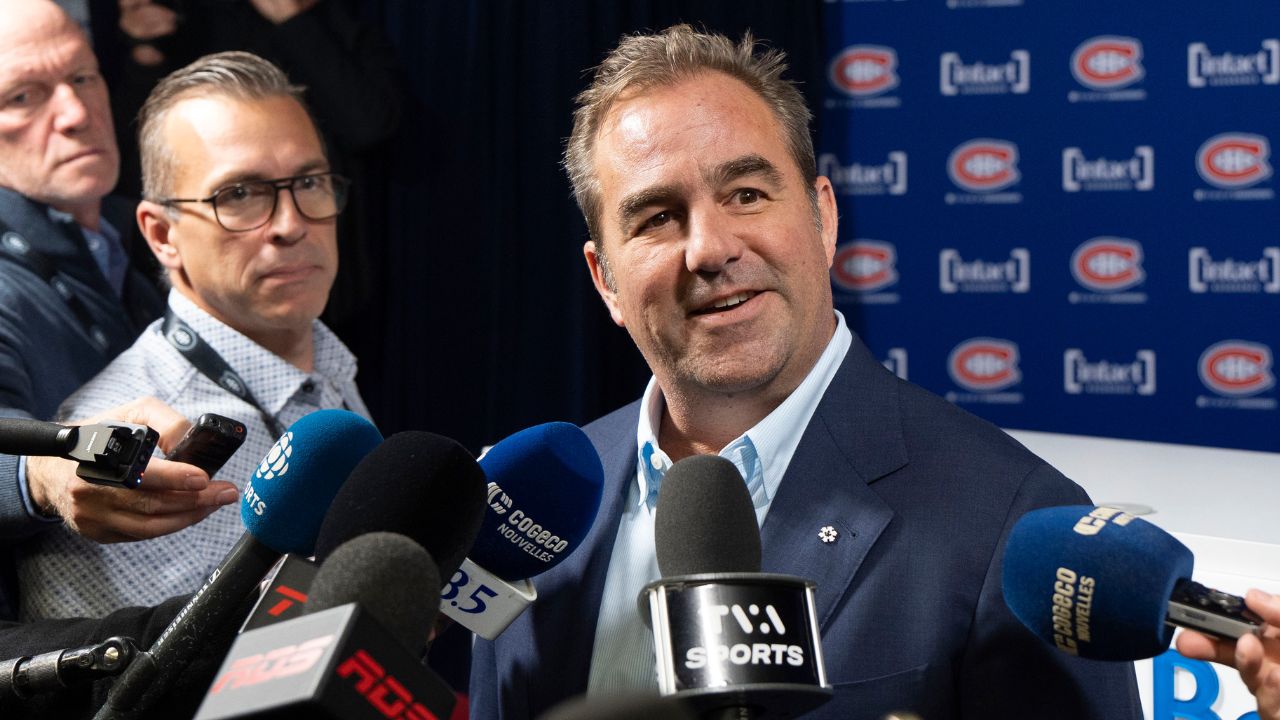
ARLINGTON, Texas – Shift or no shift, Whit Merrifield likes to set up a few steps beyond the dirt cutout, walking back onto the infield as his pitcher comes set and delivers. The Toronto Blue Jays super-utility man is far from the only infielder to get ready for each pitch in that way and he’s been doing it for as long as he remembers, but under the rule changes Major League Baseball unveiled for the 2023 season, his long-established habit is out the window.
The incoming requirement that infielders have both feet within the cutout’s boundaries means “you’d be halfway into the dirt” with a walking start, he explained, “so it changes the whole pre-pitch routine.” Concern about the disruption to the game’s subtleties, as much as wholesale opposition to change, is why the four players on the Competition Committee representing the players association, Merrifield among them, voted against the implementation of the new rules.
“Players weren’t against the pitch clock or the shift ban,” said Merrifield. “There are just certain things that as players we were trying to avoid as far as altering the dynamic of the game that come along with the pitch clock and the shift. We brought those issues up and we tried to address them in a couple of different ways and didn’t feel like the final proposal addressed the issues that are going to come with this stuff. We wanted it on the record that we weren’t for all the specifics that came along with the rule changes.”

That the final vote ended up falling along management-union lines – six for, all from the ownership side, including Blue Jays president and CEO Mark Shapiro, versus four against – is reflective of the persisting schism between the sides. The Competition Committee, a smart creation to come out of the bitter lockout, offered an opportunity for the sides to work in a more collaborative fashion on rule changes. But the 6-4 composition plus an umpire representative means that the league always gets final say and in the body’s first major act, commissioner Rob Manfred wielded that hammer.
“It went really well,” Merrifield said of the committee’s process. “It felt like we were heard. I felt the conversations were good. They were two-way. They were genuine. It was just disappointing to see the actual proposal and see all the stuff we talked about not in there. I don’t know why that was. I don’t know if Manfred came in and said, no, this is how we’re going to do it, or that the plan all along was to make us feel like we were a part of it. I don’t know. But I do feel like the calls went well. It was a little disappointing.”
Especially since the three changes are so significant, even if they aren’t entirely surprising given Major League Baseball’s testing of them in the minor leagues in recent seasons.

The pitch clock is the most substantial, with pitchers mandated to begin their motion within 15 seconds when the bases are empty and 20 seconds when runners are on. Pitchers can disengage the rubber twice during an at-bat without penalty, which limits them to two pickoff attempts. Hitters, meanwhile, must be ready with eight seconds left on the clock and can call time once per trip to the plate.
Next are the defensive shift restrictions, which will force two infielders to be positioned on either side of second base with both feet on the dirt. As well, infielders won’t be able to switch sides unless there’s a defensive substitution.
Finally, in the least controversial switch, the bases will be expanded from 15 inches to 18 inches, reducing the gap between first and second and second and third by 4.5 inches, but more importantly creating a safer space for plays at first base.
During a news conference in New York, Manfred deflected some of the player reaction by saying that “if you look back at the changes that have taken place in the game in the last few years, there’s always a period at the beginning where because all of us love the game so much, there’s a reluctance to see change.”
“It’s just a reflection of people’s attachment to the game,” he continued. “Then as you watch the change in operation, I think there is more acceptance, and, in a lot of cases, people who were initially opposed actually become supporters of the change.”

There was certainly no shortage of concern around the Blue Jays, for whom the new rules will force change at both the individual and collective level. Some numbers to digest:
• Defensively, they’ve employed shifts in 54.4 per cent of all plate appearances, per Statcast data, more than any other team in the majors and well above the average of 34.3 per cent.
• They also shifted right-handed hitters a big-league high 47.6 per cent, more than double the average of 20.3 per cent.
• The Blue Jays have also been far more aggressive in using four-man outfields, deploying them in 238 plate appearances, per Statcast data, more than double the second-place Tampa Bay Rays count of 103.
• Among their regular staff members, Trevor Richards has been shifted behind most at 67.5 per cent of his plate appearances, followed by Jose Berrios (62.3), Ross Stripling (61.4), Jordan Romano (55.8) and Alek Manoah (54.5). Kevin Gausman, notably, was among the lowest at 45 per cent.
• Shifting is less common against their hitters, although Cavan Biggio, at a team-high 83.4 per cent, Jackie Bradley Jr. at 64.3 and George Springer at 60.1 will all have the field open up for them. Santiago Espinal, Vladimir Guerrero Jr., Teoscar Hernandez and Lourdes Gurriel Jr., have been shifted in 11.3 per cent of plate appearances or less. Bo Bichette has been shifted once all year.
“Like every team, we’ll have to make some adjustments in the off season and see how we’re going to deploy defensively,” said interim manager John Schneider. “We’ll be fine with it, mainly up to us to adjust accordingly as an organization, as a staff and go from there.”
Gausman sees the merit in restricting shifts and likes working fast to put hitters on their heels, but in spite of that, “I just don’t agree with the pitch clock, I just don’t like changing the game,” he said. “I’m kind of like an old school mentality where I think the game is great the way it is. I don’t think we need to change anything. I think hitters need to adapt to how nasty pitchers are now. And that’s why guys can’t hit the ball where they want to, because the pitches are moving at historical speeds with historical movement. And so I think that’s Rob’s way of trying to combat that.”
Similarly, Biggio immediately noted how the defensive restrictions will open up the 3-4 hole for him and likely mean several more hits a season. But he added, “I watched my dad play for the first 12 years of my life and I fell in love with the game so I hate to see it changed.”
Biggio experienced the pitch clock first-hand during a rehab assignment at triple-A Buffalo earlier this season and felt it “is a little bit too fast.” While the MLB timer will be set a touch slower at 15 and 20 versus 14 and 18/19 in the minors, “it’s going to take a little bit of an adjustment period next year, especially with guys who have been in the league longer than myself.”

During his plate appearances with Buffalo, Biggio consciously reminded himself to be ready with nine seconds left on the time “and it took my thoughts away from what I’m trying to do in the box, even a little bit. It is kind of a distraction. … You have to change your routine in between pitches.”
Gausman expected the pitch clock’s introduction to be more staggered, Biggio had hoped for a bit more pace and Merrifield said players pushed for a more gradual introduction of the shift, with players either allowed to stay on the dirt and play where they want, or stay on either side of second but be given more rein to move into the outfield.
“At the end of the day, they’re going to do what they want, they really don’t need our approval,” said Biggio. “If you look at the voting, all the players voted against it and they really don’t care. That sucks to hear but it’s kind of where the game is. You’ve got to make adjustments to where the game is going to go. We’ll see.”
Consequences, both intended and not, are sure to follow.
Research cited by MLB showed that fans most enjoyed stolen base attempts, triples, doubles and great defensive plays, while the least popular actions on the field were mound visits, walks, pitching changes and pickoff attempts.
Over the past 25 years, the average game time has risen from 2:56 to 3:07 despite a reduction in scoring from 4.77 to 4.30. Batting average has dropped from .267 to .243 as strikeouts have spiked from 17.1 per cent to 22.3 per cent. Stolen base attempts have plummeted from 2.15 to 1.35.
Merrifield worried about how the art of the stolen base will disappear, with capable baserunners forcing two pickoff attempts before taking off on the third.
“It’s just going to be a track meet, you’re not going to have to put any work into it, really,” he said. “Get a big lead, make the pitch pick over and watch the clock and when the clock runs out, you’re going to go.”
MLB consultant Theo Epstein pointed to the wider trends in the game and argued that rule changes were made in “an effort to restore the game to previous eras and to more traditional norms that featured more contact, more action, faster pace and greater entertainment value.”

Those efforts come at the expense of the norms and routines, often preached by organizations, established by players. Though minor-league players adapted quickly, change is easier for players at the beginning of their careers. Some big-leaguers are sure to struggle as they seek new comfort zones and patterns. Evaluating players within the context of what the game is expected to look like next year and beyond is going to be a challenge. So much has the potential to be different, in ways both expected and not.
“It’s not management’s fault – they just haven’t been between the lines to know the little intricacies that come with it,” said Merrifield. “We get that people watching the game now say it’s too slow and they want more action and they want faster games. Players understand that. We’re just trying to give our spin on it. We did and as much as they said it was heard, it wasn’t put on paper.”
As a result, for better or worse, it’s MLB’s vision for the sport that is coming.







